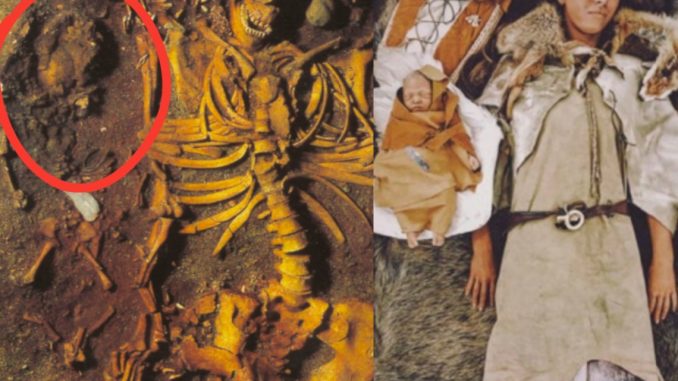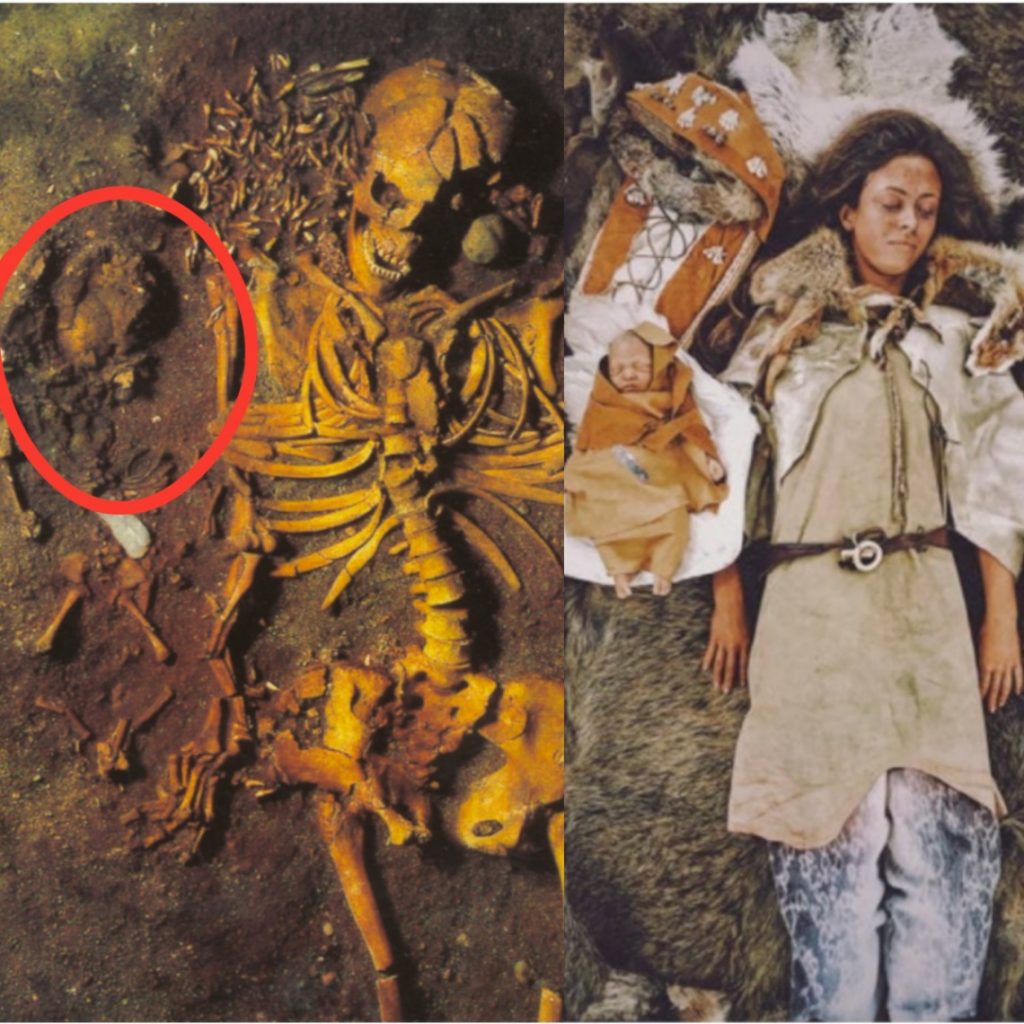
In the windswept landscapes of ancient Denmark, where the earth holds secrets dating back millennia, archaeologists have uncovered a poignant burial that offers a glimpse into the lives of our distant ancestors. Dating back to 4000 BC, this remarkable discovery tells the story of a young girl laid to rest with her infant son cradled on a swan’s wing, shedding light on the customs and beliefs of prehistoric communities.

The burial site, located in the peat bogs of Scandinavia, was first unearthed by researchers in recent years, sparking international interest and intrigue. At the heart of the discovery lies the remains of a young woman, estimated to be in her late teens or early twenties at the time of her death, along with the skeleton of an infant nestled in her arms.
What sets this burial apart is the presence of a swan’s wing carefully placed under the head of the infant, symbolizing protection and perhaps even a belief in the afterlife. This poignant detail speaks to the reverence with which our ancestors treated their dead, offering comfort and solace in the face of loss and uncertainty.
But who were these individuals, and what led to their untimely demise? Through careful analysis of the burial site and its contents, archaeologists have pieced together a narrative of life and death in ancient Denmark. It is believed that the young woman may have been a member of a Neolithic farming community, living off the land and practicing rituals passed down through generations.
The presence of the infant suggests that childbirth and child-rearing were integral aspects of prehistoric society, with mothers caring for their young even in death. The swan’s wing, a symbol of grace and protection, speaks to the spiritual beliefs of the time, offering hope for the journey beyond the grave.
As researchers continue to study the burial and its significance, they hope to gain new insights into the lives and beliefs of ancient Scandinavians. Through the careful analysis of artifacts, DNA analysis, and other scientific techniques, they aim to unravel the mysteries of this distant past and shed light on the customs and traditions that shaped our ancestors’ worldview.
In the end, the discovery of the young girl laid to rest with her infant son cradled on a swan’s wing offers a poignant reminder of the universal themes of love, loss, and the passage of time. As we reflect on their story, we are reminded of our shared humanity and the enduring connections that bind us to our ancestors, even across the vast expanse of history.
Leave a Reply